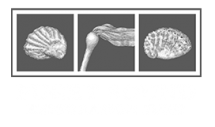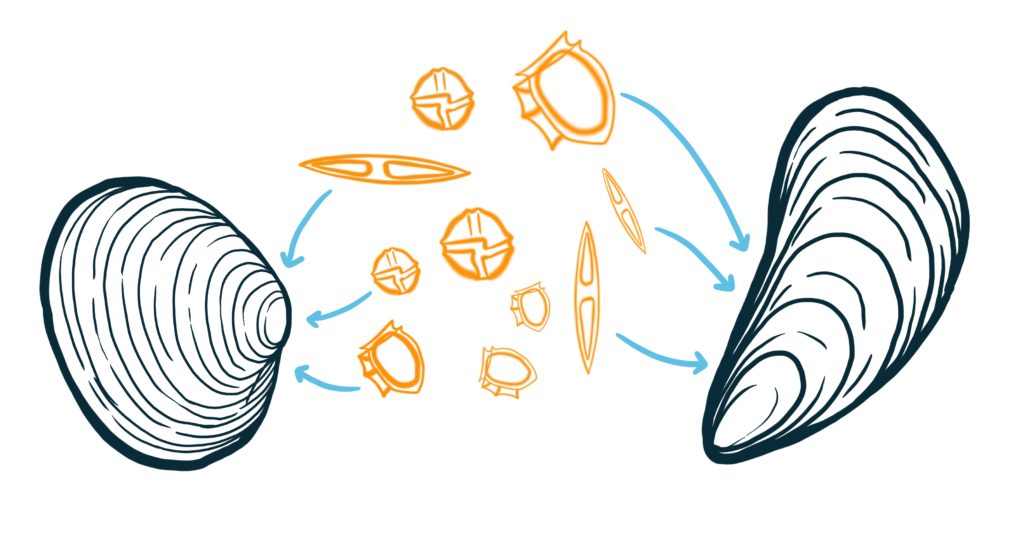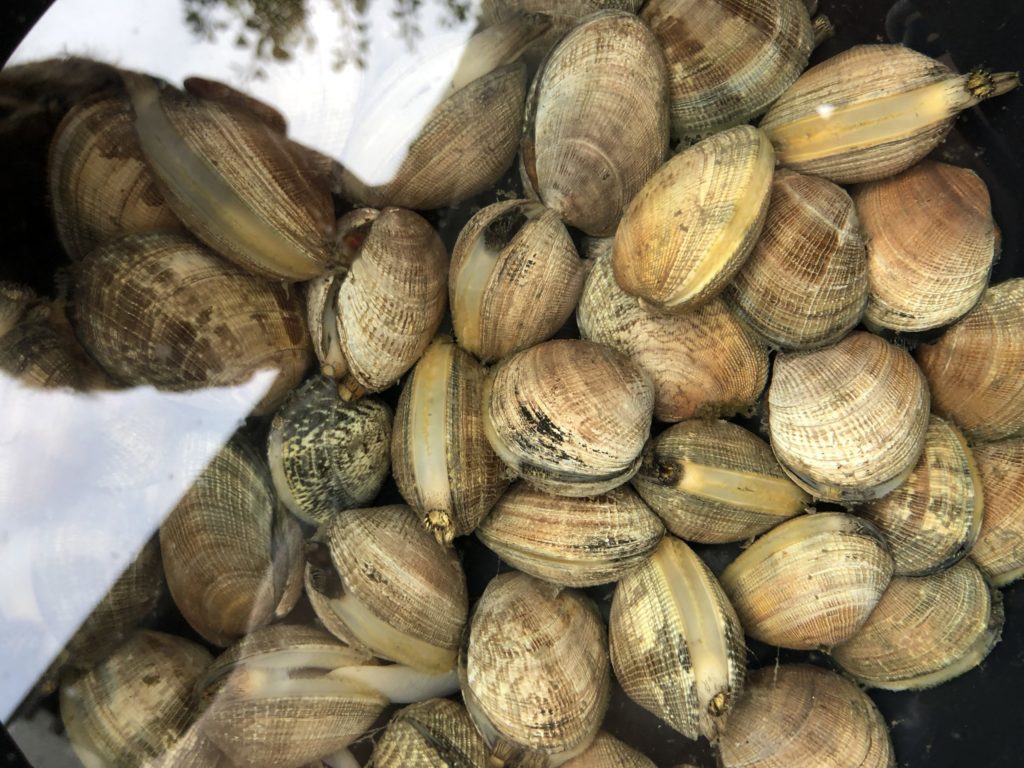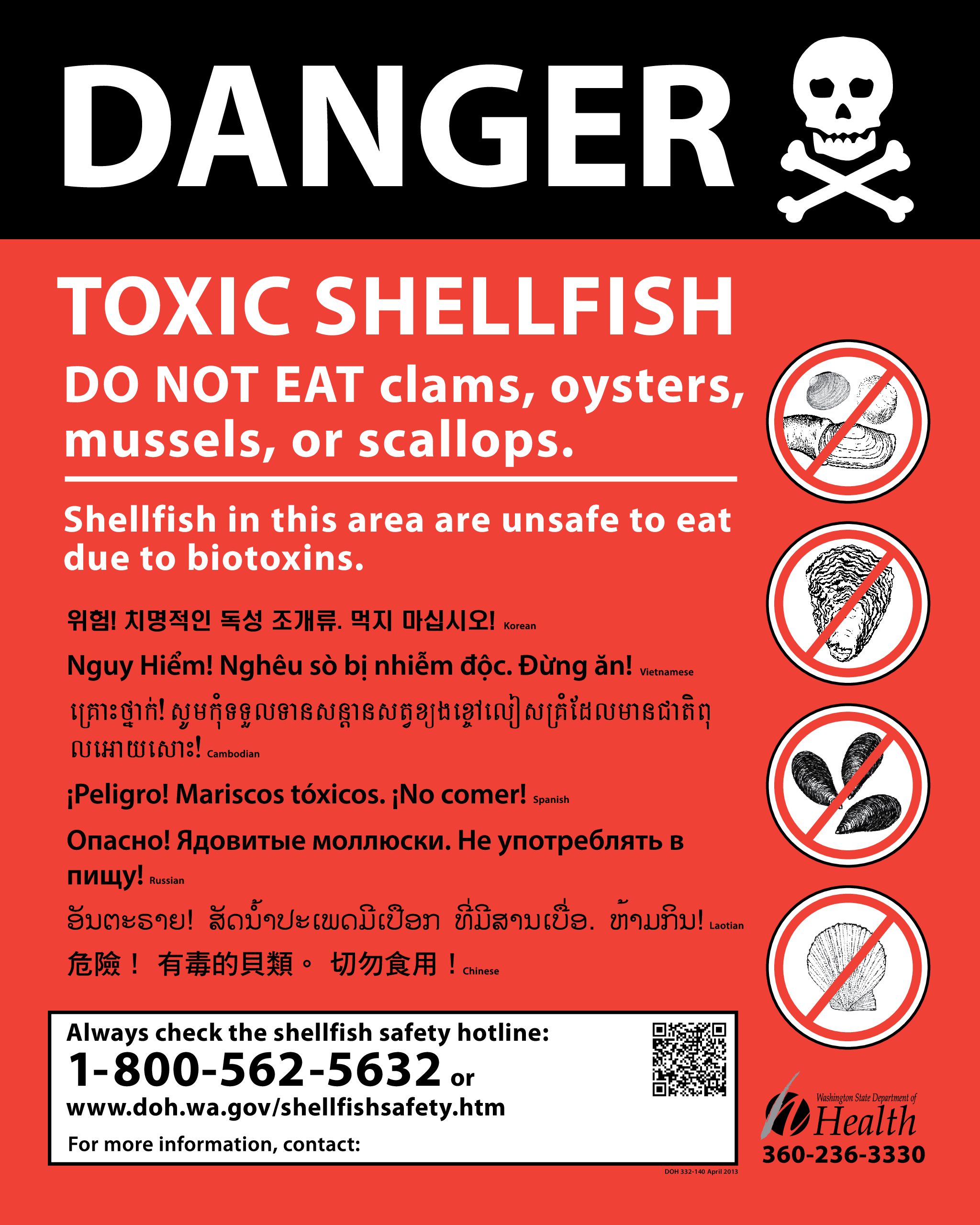At sites all across Puget Sound, our volunteers routinely collect shellfish samples and submit them to Washington State Department of Health (DOH) for testing. If shellfish toxins are present at unsafe levels for human consumption, DOH can close beaches for harvest so that no one becomes ill. Our volunteers’ efforts are a critical component of keeping recreational shellfish harvesting safe for all Puget Sound communities. They enable us all to enjoy feasting on the bounty of clams, oysters, and mussels that our waters provide. Washington has one of the most robust biotoxin monitoring programs of any state, thanks to the time and effort of volunteers.
If you are interested in becoming a volunteer, please reach out to Ally, ally@restorationfund.org. We are especially looking for volunteers willing to sample at sites shown as glowing orange on our biotoxin site map below! Please note that site locations are approximate.



